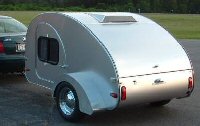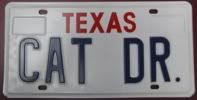b.bodemer
I also do a lot of dry camping so I added a battery/inverter in the back of the tow vehicle(my truck). I use a 25' extension cord that runs out of the truck/inverter into the [teardrop]. This allows [the use of a 110V household] fan every night and movie too on the little dvd player. When I get home I just charge (the battery in the back of the truck] up again for the next trip.
Barb
nevadatear
Also, there are things called inverters that will take your 110 appliance and convert it to 12 V so you can run your regular stuff off your battery 12 v systems. Many folks do that so they can use a computer in the car.
Debbie
Inverters are a neat idea...


...whereas the end result is the same, an
inverter will use a 12V power source and change it to 110V. Inverters are sold in various watt outputs, with the more powerful outputs becoming more expensive.
Say you're car camping in the boonies (no 110V power hookups... known as "primitive" camping) and want to whip up a batch of margaritas with a household, 110V blender... you'd plug your blender into the household socket on the inverter connected to your car's 12V automotive battery... but an inverter with that much wattage output might cost over $200! whereas an inverter with just enough wattage output necessary to power a 110V household charging dock for a laptop battery might cost $40.
A
converter, or, power supply, will use a 110V power source (at a usually-busy, "improved" campsite) and change it to 12V... so you can run the 12V lighting in your teardrop's galley and sleeping cabin and at the same time have the ability (with a 12V battery charger) to recharge your teardrop's 12V deep-cycle battery. Some RV converters contain a sophisticated 3-stage 12V battery charger... but those get pricey, too, in the $300 to $400 dollar range... (someone please adjust my posted component pricing if it's way off!)

If I had to have just one or the other in my teardrop, it'd definately be a 12V system rather than the 110V system... but it's easy to have both.







 ...whereas the end result is the same, an
...whereas the end result is the same, an 


 Mark (& Cindi)
Mark (& Cindi) 



 There are some real inconsiderate jerks out there.
There are some real inconsiderate jerks out there.

